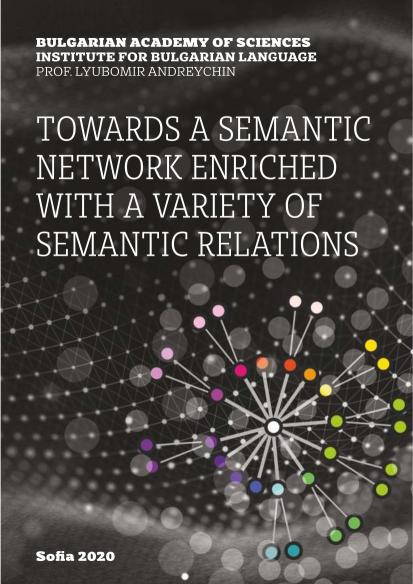Putting pieces together: Predicate-argument relations and selectional preferences
Putting pieces together: Predicate-argument relations and selectional preferences
Author(s): Svetlozara Leseva, Ivelina Stoyanova, Maria Todorova, Hristina Kukova
Subject(s): Language studies, Language and Literature Studies, Theoretical Linguistics, Applied Linguistics, Lexis, Semantics, Comparative Linguistics, Cognitive linguistics, Computational linguistics
Published by: Институт за български език „Проф. Любомир Андрейчин“, Българска академия на науките
Keywords: conceptual structure; predicate-argument relations; selectional preferences; Frame semantics; WordNet; VerbNet; FrameNet
Summary/Abstract: This paper presents the work on enhancing WordNet with semantic relations between verb synsets and classes of noun synsets corresponding to major participants in the predicates’ conceptual structure. We first provide the theoretical background and motivation for the study and discuss the integration of the three complementary semantic resources – WordNet, VerbNet and FrameNet – which we then use to the end of devising a framework for enriching the relational structure of WordNet with a system of predicate-argument and predicate-adjunct relations. We pay particular attention to the analysis of the relations of inheritance between conceptual frames in FrameNet and between frame elements (the elements of these conceptual frames) which results in the elaboration of a hierarchy that is then translated as a set of relations and relation subtypes between predicates and the main elements in their conceptual structure. The conceptual frames with their corresponding frame elements and selectional restrictions are assigned to verb synsets in WordNet. We then go on to propose a typology of selectional preferences that verbs impose on the nouns they combine with. Using restrictions that have already been defined in FrameNet and VerbNet as well as other semantic information from the three resources, we propose a unified and extended set of selectional preferences represented as sets of WordNet classes and (sub)trees in the WordNet structure. The model is illustrated by a case study of the relation Theme and its subtypes.
Book: Towards a Semantic Network Enriched with a Variety of Semantic Relations
- Page Range: 49-86
- Page Count: 38
- Publication Year: 2020
- Language: English
- Content File-PDF

